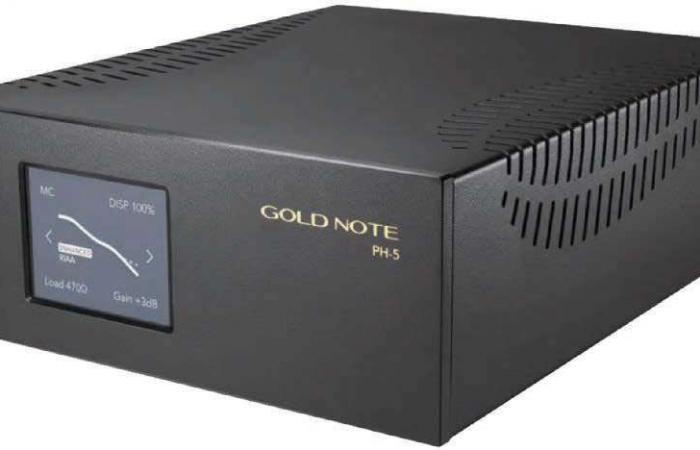The accessible little brother, carrying many of the features, of the PH-10 tested last year ( cf. no 711). Starting with the choice of three correction curves as emblematic as RIAA, Decca London and American Columbia, the last two dear to fans of historical mono engravings. Simple, the PH-5 has only one MM/MC input whose parameters are easily scrolled on the touch screen, rather than using an encoder wheel. At the output, you have the choice between unbalanced RCA and balanced XLR. The gain, 40 dB in MM and 60 dB in MC, is adjustable by + 3dB or ± 6dB, as is the impedance, in nine values distributed between 10 Ω and 47 kΩ. A single capacitance value in MM, 220 pF, suitable for the majority of cases and a Subsonic filter set to 10 Hz with a very steep slope of 36 dB/octave in order to evacuate masking infrasound. An Enhanced filter inspired by Neumann engraving machines completes each correction curve on demand. Its action raises the treble by a few dB above 8 kHz, extending the PH-5’s response up to 50 kHz with a signal-to-noise ratio of 89 dB. The circuits use surface components with control logic and relays. As on the PH-10, a socket is provided to receive a future low-noise linear external power supply.
Several listens with different cartridges indicate that the PH-5 shares the same sonic DNA with its big brother PH-10, that of electronics with an assertive character, giving pride of place to the musical signal, its readability, its linearity, in a word, to its integrity. Good news. The PH-5 stands out from the bulk of its competitors thanks to its multiple adjustment possibilities allowing it to adapt to all cartridges on the market, MM and MC, affordable or not. Each association turns out to be pleasant, the PH-5 not seeking to impose a sonic identity. The Enhanced position provides aeration at the top of the spectrum, generating a soundstage that appears more airy and more detailed. In RIAA Enhanced with an Audio-Technica AT-ART9 cell loaded at 100 Ω, the capture of O Solitude by Purcell in a church of the century (Deller Consort, Alfred Deller. HM, 1977. An exceptional recording: Diapason d’or, Charles Cros Academy Grand Prix 1979. 33 RPM.) is characterized by a feeling of serenity coupled with mastery: Alfred Deller’s voice gains in nuances, in expressiveness, just like the continuo on the organ and bass viol. This Enhanced correction also benefits the violin and cello of the Trio “Korppoo” by Sibelius, therefore more alert (Fantasy: Andante. Sibelius Piano Trio. Yarlung Records, 2016. 45 RPM). Let us thank the Italian manufacturer for providing music lovers with such a complete phono stage, with its touch screen, capable of combining with an infinite number of cells and putting them in the condition to deliver the best at the best price.






